D-Cysteine Ethyl Ester Reverses the Deleterious Effects of Morphine on Breathing and Arterial Blood-Gas Chemistry in Freely-Moving Rats
- PMID: 35814208
- PMCID: PMC9260251
- DOI: 10.3389/fphar.2022.883329
D-Cysteine Ethyl Ester Reverses the Deleterious Effects of Morphine on Breathing and Arterial Blood-Gas Chemistry in Freely-Moving Rats
Abstract
Cell-penetrant thiol esters including the disulfides, D-cystine diethyl ester and D-cystine dimethyl ester, and the monosulfide, L-glutathione ethyl ester, prevent and/or reverse the deleterious effects of opioids, such as morphine and fentanyl, on breathing and gas exchange within the lungs of unanesthetized/unrestrained rats without diminishing the antinociceptive or sedative effects of opioids. We describe here the effects of the monosulfide thiol ester, D-cysteine ethyl ester (D-CYSee), on intravenous morphine-induced changes in ventilatory parameters, arterial blood-gas chemistry, alveolar-arterial (A-a) gradient (i.e., index of gas exchange in the lungs), and sedation and antinociception in freely-moving rats. The bolus injection of morphine (10 mg/kg, IV) elicited deleterious effects on breathing, including depression of tidal volume, minute ventilation, peak inspiratory flow, and inspiratory drive. Subsequent injections of D-CYSee (2 × 500 μmol/kg, IV, given 15 min apart) elicited an immediate and sustained reversal of these effects of morphine. Morphine (10 mg/kg, IV) also A-a gradient, which caused a mismatch in ventilation perfusion within the lungs, and elicited pronounced changes in arterial blood-gas chemistry, including pronounced decreases in arterial blood pH, pO2 and sO2, and equally pronounced increases in pCO2 (all responses indicative of decreased ventilatory drive). These deleterious effects of morphine were immediately reversed by the injection of a single dose of D-CYSee (500 μmol/kg, IV). Importantly, the sedation and antinociception elicited by morphine (10 mg/kg, IV) were minimally affected by D-CYSee (500 μmol/kg, IV). In contrast, none of the effects of morphine were affected by administration of the parent thiol, D-cysteine (1 or 2 doses of 500 μmol/kg, IV). Taken together, these data suggest that D-CYSee may exert its beneficial effects via entry into cells that mediate the deleterious effects of opioids on breathing and gas exchange. Whether D-CYSee acts as a respiratory stimulant or counteracts the inhibitory actions of µ-opioid receptor activation remains to be determined. In conclusion, D-CYSee and related thiol esters may have clinical potential for the reversal of the adverse effects of opioids on breathing and gas exchange, while largely sparing antinociception and sedation.
Keywords: D-cysteine ethyl ester; Sprague Dawley rats; antinociception; gas exchange; morphine; respiratory depression; sedation; thiol esters.
Copyright © 2022 Getsy, Baby, May, Young, Gaston, Hodges, Forster, Bates, Wilson, Lewis, Hsieh and Lewis.
Conflict of interest statement
SB was employed by Galleon Pharmaceuticals, Inc., during the performance of the studies in this manuscript. SL declares that this study was funded in part by Galleon Pharmaceuticals, Inc. The leadership of the company was not directly involved in this study as a commercial entity. Only the principal scientist of the company (SB) was involved in the design of the studies, the collection, analysis, interpretation of data, the writing of the manuscript, and the ultimate decision to submit the manuscript for publication. The remaining authors declare that the research was conducted in the absence of any commercial or financial relationships that could be construed as a potential conflict of interest.
Figures


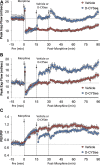
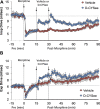
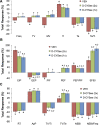
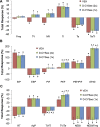
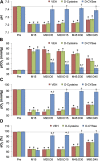


Similar articles
-
The ventilatory depressant actions but not the antinociceptive effects of morphine are blunted in rats receiving intravenous infusion of L-cysteine ethyl ester.Biomed Pharmacother. 2022 Dec;156:113939. doi: 10.1016/j.biopha.2022.113939. Epub 2022 Oct 28. Biomed Pharmacother. 2022. PMID: 36411626 Free PMC article.
-
L-cysteine ethylester reverses the adverse effects of morphine on breathing and arterial blood-gas chemistry while minimally affecting antinociception in unanesthetized rats.Biomed Pharmacother. 2024 Feb;171:116081. doi: 10.1016/j.biopha.2023.116081. Epub 2024 Jan 13. Biomed Pharmacother. 2024. PMID: 38219385 Free PMC article.
-
D-Cystine di(m)ethyl ester reverses the deleterious effects of morphine on ventilation and arterial blood gas chemistry while promoting antinociception.Sci Rep. 2021 May 11;11(1):10038. doi: 10.1038/s41598-021-89455-2. Sci Rep. 2021. PMID: 33976311 Free PMC article.
-
D-cysteine ethyl ester and D-cystine dimethyl ester reverse the deleterious effects of morphine on arterial blood-gas chemistry and Alveolar-arterial gradient in anesthetized rats.Respir Physiol Neurobiol. 2022 Aug;302:103912. doi: 10.1016/j.resp.2022.103912. Epub 2022 Apr 18. Respir Physiol Neurobiol. 2022. PMID: 35447347 Free PMC article.
-
L-cysteine methyl ester overcomes the deleterious effects of morphine on ventilatory parameters and arterial blood-gas chemistry in unanesthetized rats.Front Pharmacol. 2022 Sep 28;13:968378. doi: 10.3389/fphar.2022.968378. eCollection 2022. Front Pharmacol. 2022. PMID: 36249760 Free PMC article.
Cited by
-
Lipophilic analogues of D-cysteine prevent and reverse physical dependence to fentanyl in male rats.Front Pharmacol. 2024 Apr 5;14:1336440. doi: 10.3389/fphar.2023.1336440. eCollection 2023. Front Pharmacol. 2024. PMID: 38645835 Free PMC article.
-
Reversal of morphine-induced respiratory depression with the µ1-opioid receptor antagonist naloxonazine engenders excitation and instability of breathing.Am J Physiol Lung Cell Mol Physiol. 2025 Jul 1;329(1):L97-L111. doi: 10.1152/ajplung.00045.2025. Epub 2025 May 14. Am J Physiol Lung Cell Mol Physiol. 2025. PMID: 40366705 Free PMC article.
-
L-NAC reverses of the adverse effects of fentanyl infusion on ventilation and blood-gas chemistry.Biomed Pharmacother. 2022 Sep;153:113277. doi: 10.1016/j.biopha.2022.113277. Epub 2022 Jun 17. Biomed Pharmacother. 2022. PMID: 35724513 Free PMC article.
-
The cystathionine-γ-lyase inhibitor DL-propargylglycine augments the ability of L-cysteine ethyl ester to overcome the adverse effects of morphine on breathing.Am J Physiol Lung Cell Mol Physiol. 2025 Jun 1;328(6):L809-L825. doi: 10.1152/ajplung.00003.2025. Epub 2025 Mar 18. Am J Physiol Lung Cell Mol Physiol. 2025. PMID: 40099842 Free PMC article.
-
The ventilatory depressant actions but not the antinociceptive effects of morphine are blunted in rats receiving intravenous infusion of L-cysteine ethyl ester.Biomed Pharmacother. 2022 Dec;156:113939. doi: 10.1016/j.biopha.2022.113939. Epub 2022 Oct 28. Biomed Pharmacother. 2022. PMID: 36411626 Free PMC article.
References
Grants and funding
LinkOut - more resources
Full Text Sources

